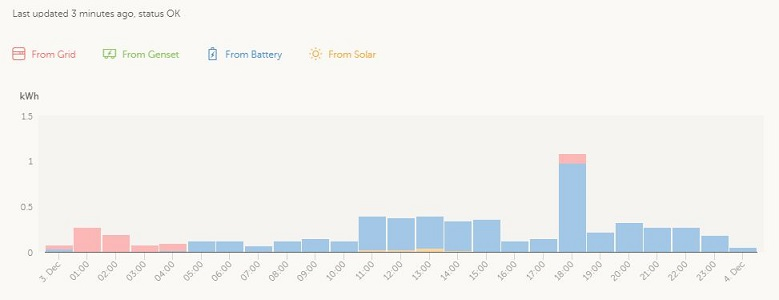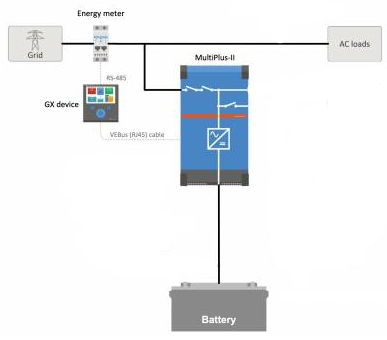Good-day. I am trying to understand the difference between a "grid parallel load" and a load on "AC out 2" when using a Quattro or a Multiplus in ESS mode. Clearly, the inverter does not even know there is a grid parallel load unless it is configured to do so and there is an energy meter attached to measure the power flow at the grid input. (Any guidance on how to configure these aspects would be welcome). I have attempted to list the characteristics below - feel free to correct me :-
Load on AC out 2.
Powered firstly by the inverter (until the combined "AC out 1" + "AC out 2" exceeds the inverter capacity) and then by AC mains as well. The combined load must not exceed the rating of the transfer switch.
If the AC mains falls away, the AC out 2 is cut off.
Provides a way to make use of excess Solar PV yield on non-critical loads.
Grid Parallel Load
Powered firstly by the grid (under normal curcumstances does not require any additional capacity from the inverter).
Normally, the inverter drives the loads on AC out 1 (and AC out 2) as required. Under some configured conditions (not eactly clear how), the inverter starts to "push" power out of "AC in" and thus contribute to this grid parallel load. It can supply this load completely such that no power is drawn from the mains supply. The energy meter can be used to regulate the amount of power supplied via "AC in" so that it is equal to, but does not exceed, the grid parallel load.
Is there any guidance as to which approach can or should be used under which conditions.
Thanks,
John Hope-Bailie


